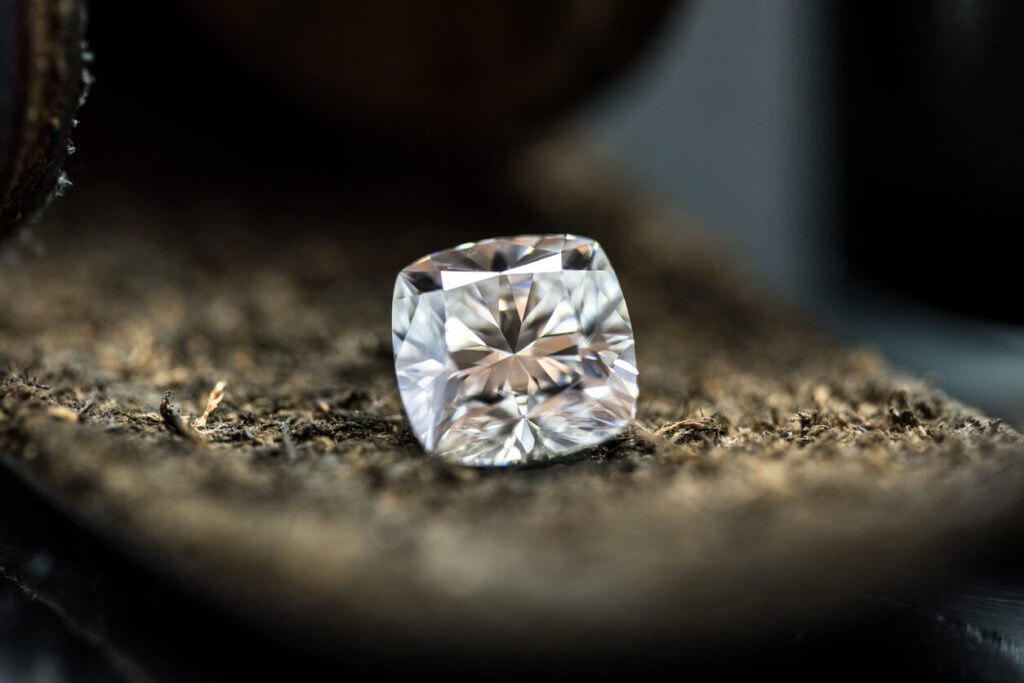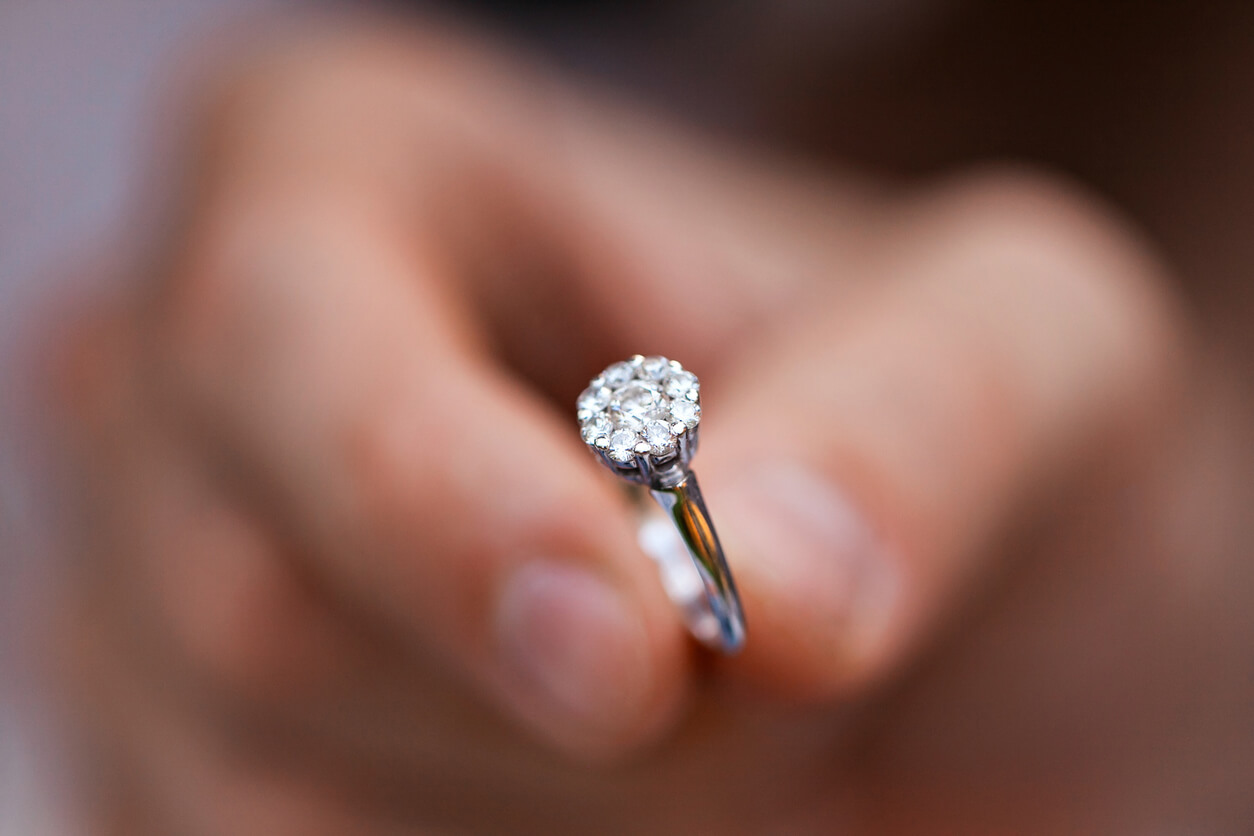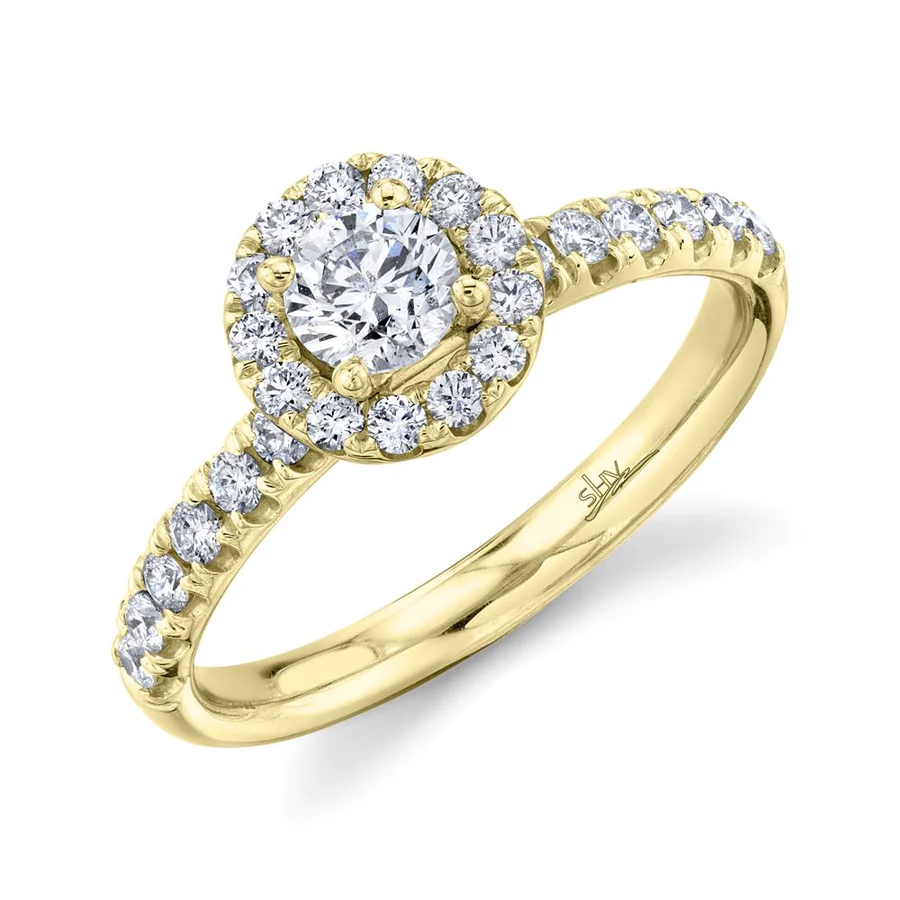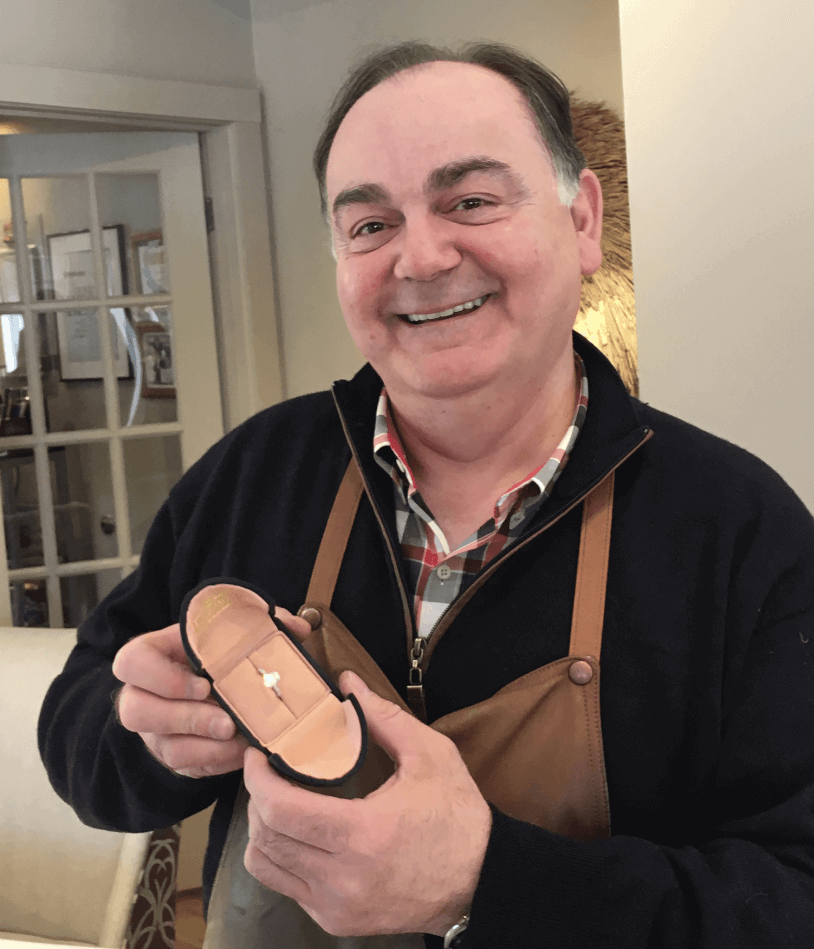DIAMOND EDUCATION
Understanding Diamond Clarity: A Guide


A Timeless heirloom. A Show Stopping jewel. A Dazzling symbol of your undying love. These are the things that come to mind when one sees the beauty of a diamond. As beautiful as they are though, know that each diamond is completely unique. With this being said, whether you’re looking at a diamond for yourself, or for a loved one, being well-informed is key to making the right choice.
If you’re familiar with the Four Cs, you’ll know that they refer to the four different elements of diamond grading. The four Cs are Color, Cut, Clarity and Carat. Put simply, these can be described as the following:
- Color: Diamond color is graded on a scale from D (colorless) to Z (light yellow or brown). The less color a diamond has, the more valuable it tends to be.
- Cut: Cut refers to how well a diamond has been shaped and faceted. The cut influences the diamond’s brilliance and sparkle.
- Carat: Carat is the unit of measurement for a diamond’s weight. One carat is equivalent to 0.2 grams.
- Clarity: Clarity measures the presence of any internal or external flaws in a diamond, known as inclusions and blemishes.
While each of the 4Cs are pivotal, in this article, we’ll be discussing clarity – what it is, how it’s graded, and how you can make an informed decision on it with regards to your next diamond purchase.
What Is Diamond Clarity, And Why Is It So Important?
Clarity is all about analyzing the visual appearance of the diamond and identifying the presence of two things: internal characteristics called inclusions and surface defects called blemishes. Inclusions are non-diamond materials that occur inside a diamond during the formation process. This might include trapped materials like minerals and fluids. Blemishes are flaws which affect the diamond’s surface. These may include nicks, scratches, abrasions or chips.
The absence of these two types of imperfections is essentially what we call Clarity. While diamond clarity doesn’t have as drastic an effect on diamond brilliance on other Cs, such as diamond cut, it still plays an important factor in assessing a diamond’s value, rarity, and ultimately its price.
How Diamond Clarity is Graded
As we’ve discussed, the clarity of a diamond depends on the presence and visibility of inclusions and blemishes. Identifying these imperfections requires more than the naked eye – it demands precision and attention to detail.
To examine these details, Gemologists employ specialized tools and techniques. A commonly used device for this is the gemological microscope, which provides 10x magnification, revealing details of a diamond that are otherwise invisible. Similarly, a loup—a type of jeweler’s magnifying glass—offers a portable solution for on-the-spot assessments.
To standardize clarity evaluation, the Gemological Institute of America (GIA) has established a grading scale. This scale is pivotal in the industry, offering a uniform way to gauge a diamond’s clarity by categorizing the visibility and impact of its imperfections.
The GIA’s grading scale is as follows:


- Flawless (FL): No inclusions or blemishes are visible under 10x magnification. These diamonds are extremely rare and command high prices.
- Internally Flawless (IF): No inclusions are visible, but there may be minor blemishes on the surface that are not visible to the naked eye.
- Very, Very Slightly Included (VVS1 and VVS2): Inclusions are present but extremely difficult to detect under 10x magnification. VVS diamonds have minute inclusions that are only visible to a skilled grader.
- Very Slightly Included (VS1 and VS2): Inclusions are visible under 10x magnification but are considered minor. These diamonds may have small inclusions that are not easily visible to the naked eye.
- Slightly Included (SI1 and SI2): Inclusions are noticeable under 10x magnification, and in some cases, they may be visible to the naked eye. However, SI diamonds typically offer good value for their quality.
- Included (I1, I2, and I3): Inclusions are visible to the naked eye in I1 and more obvious in I2 and I3 diamonds. These diamonds are considered lower in quality and may have inclusions that affect both appearance and durability.
Inclusion Characteristics that can Impact a Diamond’s Clarity.
We’ve seen how diamond clarity is graded depending on the presence of inclusions and blemishes. Now it’s time to look at the factors that affect how that grading is done. There are five main factors that influence how diamond clarity is determined in relation to inclusions: size, nature, number, location, and relief. Let’s take a look at them in closer detail:
- Size: The larger an inclusion is, the more noticeable it is and the more it can affect the diamond’s brilliance and transparency. In general, a stone with larger inclusions will be less valuable than one with smaller or no inclusions.
- Nature: The type of inclusion (whether it’s a crystal, feather, pinpoint etc) will ultimately impact how noticeable it is. Some inclusions have less impact on a diamond’s appearance and value than others. Diamonds with less noticeable inclusions are usually valued higher.
- Number: If a diamond has a higher number of inclusions, it may look cloudy and have less transparency. If a diamond has a fewer number of inclusions it will usually be more valuable.
- Location: Inclusions that are found near the center or on the table of the diamond are more visible. On the other hand, if a diamond has inclusions located in less visible areas it will generally be more valuable.
- Relief: This relates to the contrast between the inclusion and the background of the stone. Inclusions with lower relief, meaning they blend in more with the diamond’s color and are less visible, will mean a diamond is more valuable.
Balancing Your Decision with Other Factors:


While Clarity is certainly a factor that can have a heavy influence on a diamond’s price, aesthetically speaking, it’s known as the C that has the least impact on a diamond’s looks – especially when the diamond is set on the piece or is viewed in daily lighting situations. This is because many inclusions and blemishes are microscopic and don’t significantly affect a diamond’s brilliance or fire to the naked eye.
With this being said, when it comes to choosing a diamond, clients may opt to choose a stone that’s bigger in carat size, or has a better cut, in lieu of a lower clarity grading. Diamond size is always a factor that will have a sizable impact on the look of the final piece, and a diamond’s cut has a big impact on how well it reflects light.
In any case, know that when choosing a diamond, some diamond shapes can hide inclusions better than others – meaning you can get away with a lower clarity grading, while having it look more clear. For example, the brilliant cuts of round diamonds can sometimes mask small inclusions better than step cuts like emerald or ascher cuts.
Even though a diamond’s clarity may not have as big of an impact on its appearance as the other Cs, it’s still an important factor to consider in your next purchase. Clarity not only has a large impact on the diamond’s intrinsic value, but it can also play a subtle role in its overall allure and uniqueness. Each diamond is unique and has its own story, and when it comes to clarity – a diamond’s “imperfections” can be viewed as its own special fingerprint.
Therefore, while you might prioritize cut, carat, or color, viewing clarity as part of the diamond’s unique character can add a personal touch to your selection. Ultimately, the choice of your next diamond purchase should be a balance between your budget and your personal preferences.
If you’re in the Boston area and are in the market for a diamond piece, we invite you to our local showroom in Chestnut Hill. With over 40 years of experience in working with all sorts of diamonds, we can help you source and set the perfect stone for your next jewelry piece. Cut, Carat, Color and Clarity are all things we work with on a daily basis, so you can be sure our team can help you navigate the diamond world to find the perfect stone.




